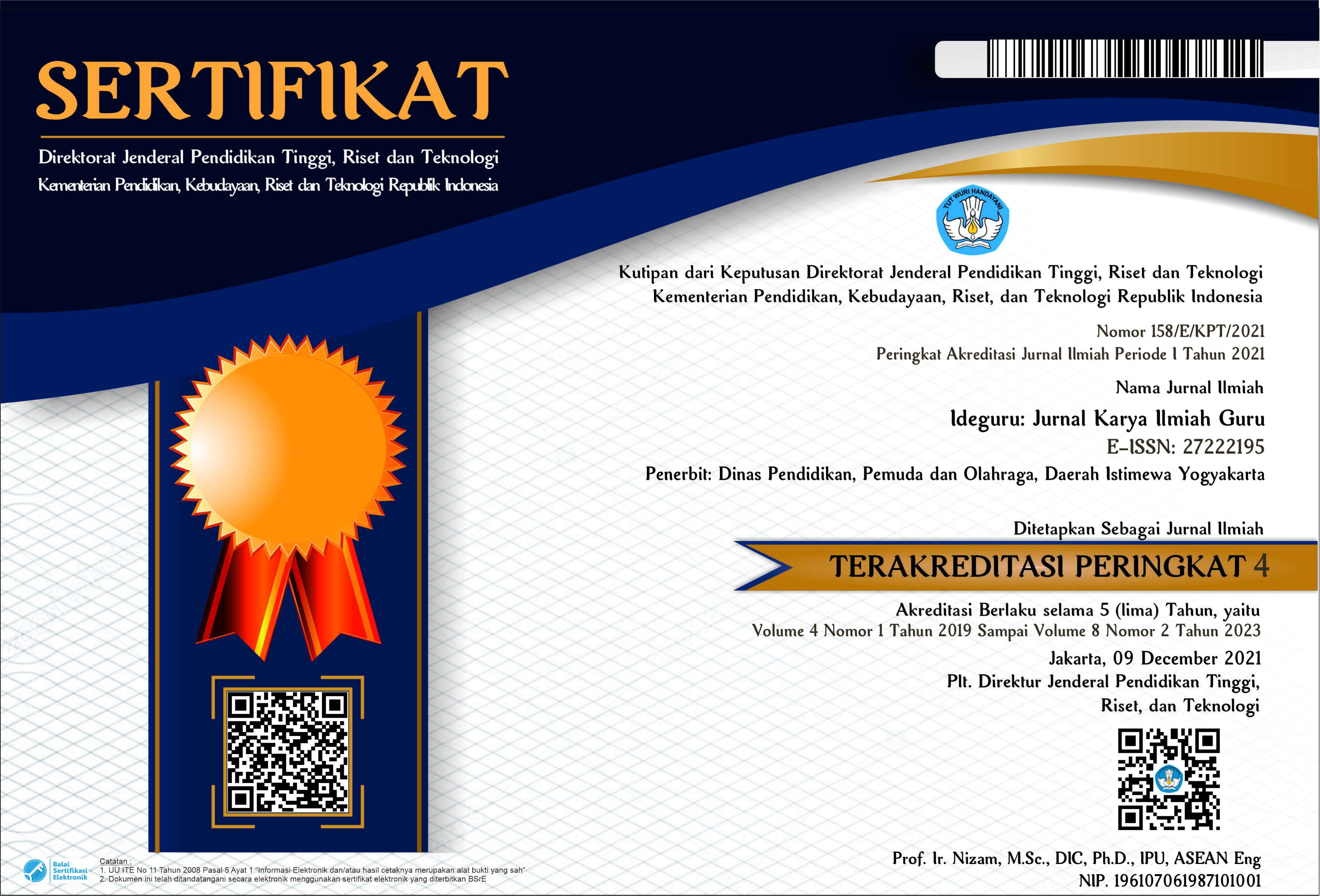Improvement of Analytical Thinking Ability on Genetic Material through Guided Inquiry Learning Model Integrated with Virtual Lab
Abstract
Genetical matter is one most subject that abstract, sophisticated, and difficult to understand; therefore, Guided Inquiry learning model integrated into virtual lab media was chosen to make it easy to understand. The aim of the Class Action Research (CAR) was to find out whether Guided Inquiry learning model integrated into virtual lab is able to increase analytical thinking abilities in genetical subject on 32 students at Class XII Science 3 of SMAN 7 Yogyakarta. The research did into two (2) cycles, in which each contain planning, implementing, observing, and reflecting plans. Research data collected as outcome, portfolio, performance, and students responses. Research data collected by both technically test (learning result) and non-test (task, performance, and questionnary). Data analized by quantitative and qualitative ways. Analysis result showed increasing analytical thinking abilities, so it could be resume that Guided Inquiry learning model integrated virtual lab was able to increase students analytical thinking abilities on Class XII Science 3 of SMAN 7 Yogyakarta in genetical subject from 75,68% into 78,08%.
PDF Downloads
Copyright (c) 2021 Ariswati Baruno

This work is licensed under a Creative Commons Attribution 4.0 International License.

 DOI:
DOI:














